Transportation Advisory Board Meeting — Longmont Updates, Priorities, and What’s Next (Nov. 10, 2025)
The city’s Transportation Advisory Board met on November 10 to review programs, hear resident concerns, and map next steps for safer streets, better bike parking, and clearer rules for new electric micromobility devices. The conversation ranged from neighborhood-level quick fixes to regional conversations about buses to Denver International Airport. This article pulls together the key takeaways, explains what the staff and board are proposing, and outlines how residents can get involved.
Table of Contents
- Quick overview: what the board covered
- 1. Neighborhood Traffic Mitigation Program: faster, more neighborhood-driven fixes
- 2. E-bike and e-moto safety campaign: education while policy evolves
- 3. Regional transit and RTD updates: Kaufman alignment, bike shelter repairs, and Skyride ideas
- 4. Bike parking ordinance: modern standards for a bike-friendly city
- 5. Bike to Work Day: turnout, tactics, and lessons learned
- 6. Public comments and community concerns
- 7. Board actions and next steps
- How residents can stay involved and what to expect
- FAQ
- Closing thoughts: practical optimism
Quick overview: what the board covered
- Neighborhood Traffic Mitigation Program (NTMP) update: moving from a slow, technical-driven petition process to a community-centered quick-solutions approach.
- E-bike and e-motor work group: an ongoing education and policy effort to align local rules with pending state and national definitions and safety standards.
- RTD route and stop realignment: consolidating local and regional stops onto Kaufman Street in January and repairing bike shelter infrastructure.
- Proposed revisions to bicycle parking rules: replacing the old percentage-based requirement with land-use-specific, short-term and long-term standards (including cargo and covered parking).
- Bike to Work Day wrap-up: outreach tactics that increased sign-ins; ideas for future expansions such as afternoon party stations.
- Public input: concerns about truck routing, left-turn design impacts, and vendor perspectives on e-bike retail and education.
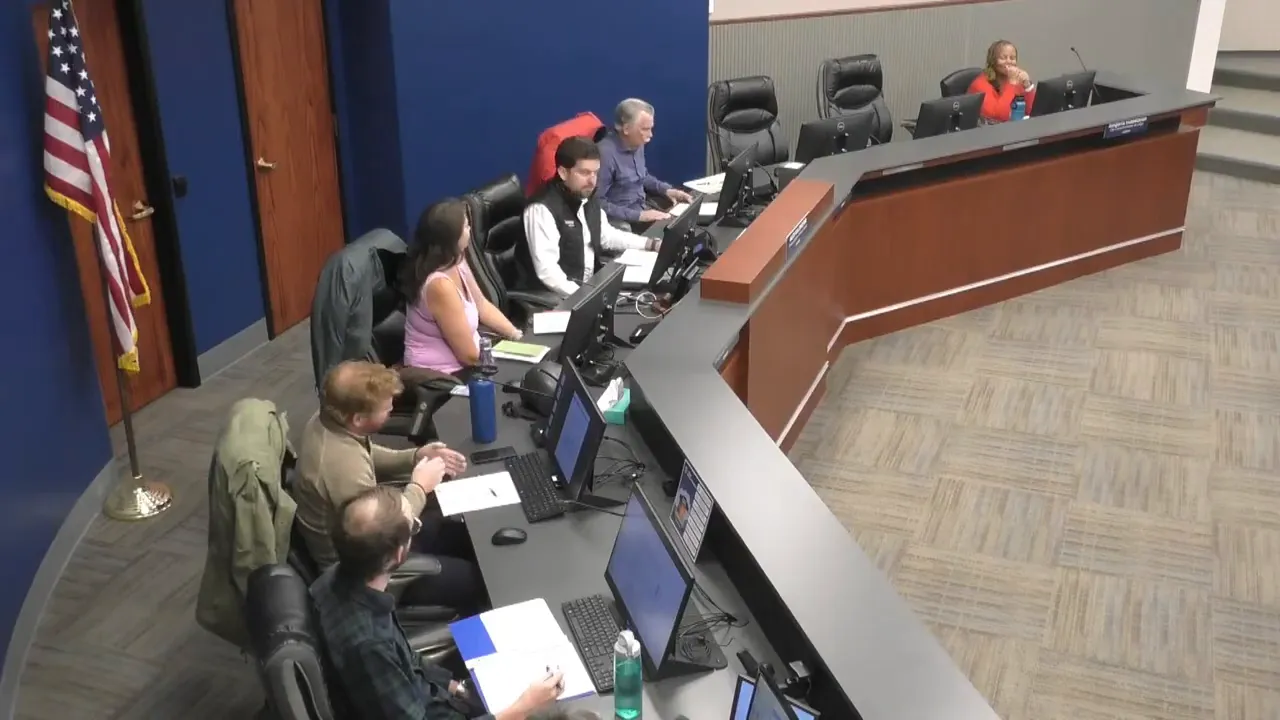
1. Neighborhood Traffic Mitigation Program: faster, more neighborhood-driven fixes
The Neighborhood Traffic Mitigation Program has existed for nearly two decades. It was originally designed to evaluate petitions from residents and, when warranted, install traffic calming treatments such as speed tables. Over time staff and residents grew concerned that the approach is too rigid, technically oriented, and slow. The proposed update reframes the program to prioritize timely, neighborhood-informed solutions.
Why change the program now?
The current NTMP relies heavily on traffic thresholds like average daily traffic and technical speed metrics. These metrics are useful for major arterials but often rule out effective, low-cost solutions on small, local streets where people walk, bike, or live. As staff explained, petitions have been submitted in recent years but rarely met the narrow technical criteria, leaving neighborhoods frustrated and feeling unheard.
What the new approach will prioritize
- Speed of response: shorter timelines and fewer procedural barriers so neighborhoods see action faster.
- Community-driven selection: measures implemented based on resident input and buy-in rather than exclusively on technical thresholds.
- Low-cost, flexible treatments: painted curb extensions, delineator posts, crosswalks, and daylighting to keep intersections clear will be preferred as first-line responses.
- Vision Zero alignment: even on low-volume streets, safety for walking and biking will be a guiding principle so people feel comfortable choosing those modes.
- Iterative solutions: start with temporary or paint-based fixes and move to concrete or permanent solutions only after community support and drainage considerations are evaluated.
Examples of likely mitigation measures
- Painted curb extensions to tighten crossing distances and shorten pedestrian exposure time.
- Delineator posts to visually narrow travel lanes and encourage lower speeds.
- Crosswalk upgrades and tactical curb daylighting to improve sight lines and prevent parking over intersections.
- Targeted stop sign warrants and neighborhood petitions backed by local support.

Engagement and timeline
Staff anticipate a draft program document and application by early next year (January to February). The NTMP update will be brought to the Transportation Advisory Board and to other stakeholder groups such as the Vision Zero Task Force for feedback before the policy is finalized. Implementation timelines will depend on operations capacity to install signs and paint; staff want to avoid creating a demand that operations cannot meet, so the document will include procedures that account for staffing and resources.
2. E-bike and e-moto safety campaign: education while policy evolves
Electric micromobility is evolving rapidly. National and state policy work is underway to clarify definitions, restrict inappropriate equipment features, and improve consumer protections. In Longmont, a multi-departmental work group has been convened to monitor developments, develop education campaigns, and recommend local policy updates when federal and state laws provide clearer frameworks.
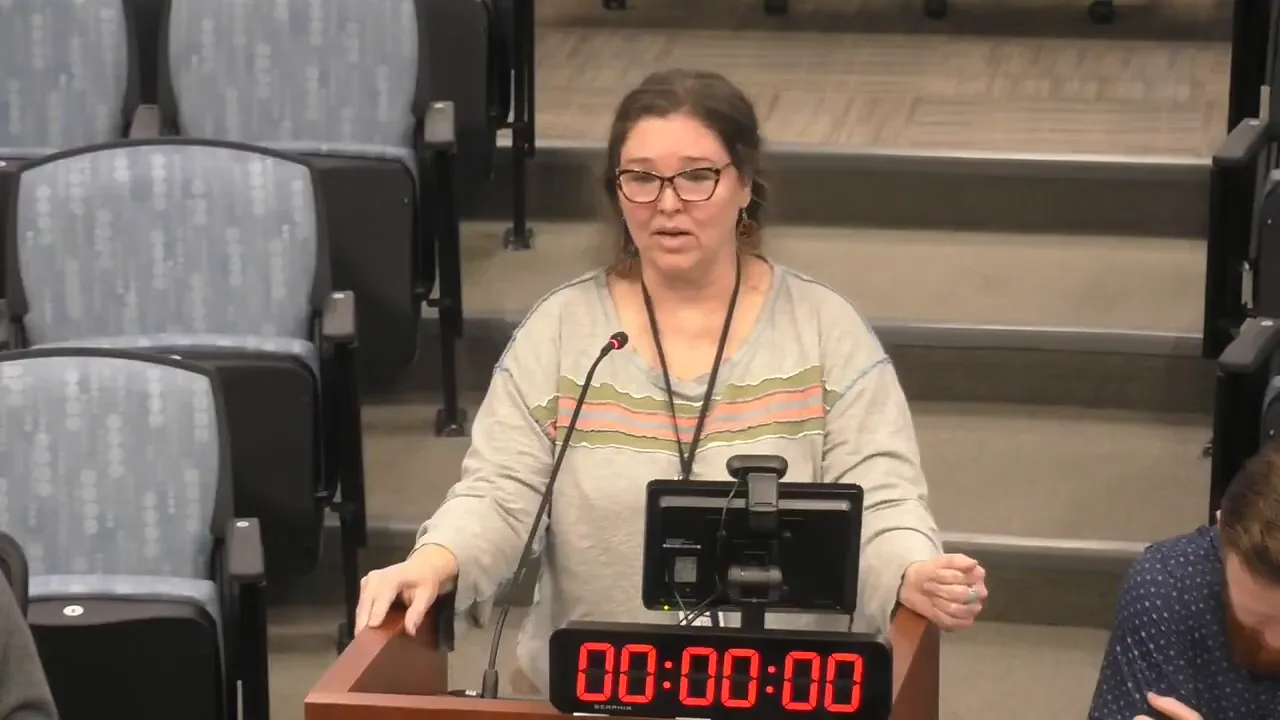
Key objectives of the work group
- Alignment: avoid patchwork regulations that vary wildly across nearby municipalities by coordinating with regional stakeholders and waiting for state or national classification changes when appropriate.
- Education: inform residents about what is legal, how to operate devices safely, and how to identify devices appropriate for trails, sidewalks, and streets.
- Consumer protection: track legislation that would define e-moto and limit the sale of mis-marketed vehicles (for example, motorized units sold as toys but built to travel at high speeds without lights).
- Enforcement considerations: explore who enforces different rules — police, park rangers, or other departments — and what enforcement tools would look like.
What is an e-moto?
Work at the national level proposes a separate classification — often called e-moto — to distinguish fast, motor-forward machines from traditional e-bikes. The intended dividing line is a device’s assisted speed. One commonly discussed threshold is in the low 20s (around 20 to 25 miles per hour). The e-moto category would clarify consumer expectations, require better labeling, and allow regulator agencies to specify where these devices can be operated.
What the city can do now
While waiting for state and federal clarity, the city will focus on:
- Rolling out clear education material on what is currently allowed where, and why certain devices are discouraged on trails.
- Providing retailers with guidance on how to communicate differences between classes of e-bikes and other motorized devices.
- Collaborating with Boulder County and other municipalities so messaging and temporary guidance stay consistent across the region.
Enforcement and practical challenges
Definitions influence enforcement. Toy vehicles are often not permitted on public rights-of-way. Class 1 and 2 e-bikes have broad access; class 3 e-bikes are allowed on roads but typically excluded from certain trails unless local governments allow them. E-motos are currently in a gray area and are generally not allowed in public right-of-way. Low-speed vehicles that meet all auto-equipment and safety standards (VIN, headlights, seat belts) are a different legal category entirely.
Because enforcement involves multiple agencies — police, parks, and operations — the work group includes those stakeholders to ensure any future rules are enforceable and practical.
3. Regional transit and RTD updates: Kaufman alignment, bike shelter repairs, and Skyride ideas
Regional transit remains a priority: reducing downtown bus traffic on Main Street, aligning local and regional stops for easier connections, and exploring how to reintroduce reliable transit service to DIA (Denver International Airport).
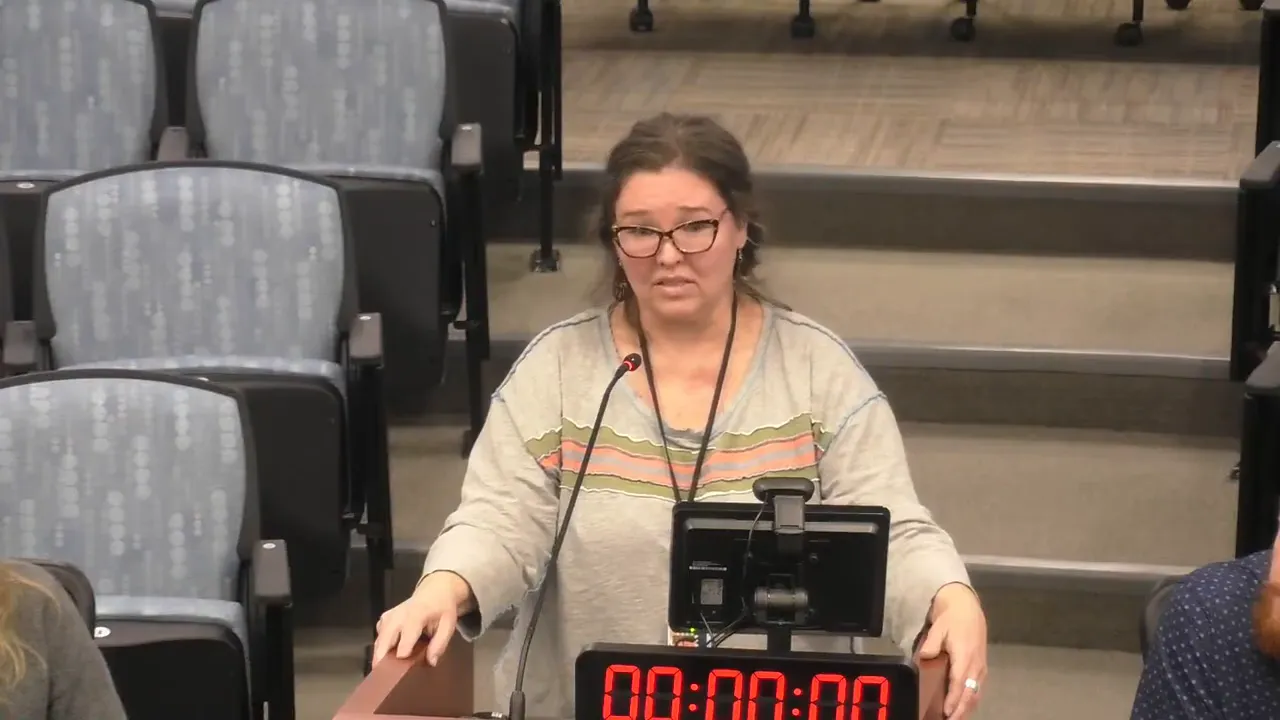
Kaufman Street realignment
In January, RTD plans to realign local and regional bus stops to use Kaufman Street from 9th to 3rd Avenue. This consolidation aims to simplify transfers and reduce bus volumes on Main Street until the First and Main transit station opens. Once the January run-board change happens, staff expect fewer stop and schedule changes until the new transit center is complete.
Bike shelter repair and station improvements
A bike shelter near the 8th and Kaufman hub was damaged during construction but has been repaired; Boulder County coordinated the fix and confirmed the shelter should be operational soon. City and RTD communications packages will notify businesses and residents ahead of the January realignment to minimize confusion.
Airport service: Skyride Longmont and interagency conversations
There are active conversations with RTD and DIA about what it would take to return a bus to the airport. The city will convene staff from multiple agencies to determine data needs, potential routing, and operational constraints. Longmont has suggested a creative alternative called Skyride Longmont — expanding the Ride Longmont program to provide shuttle service to DIA, potentially with RTD contributions.
Ideas being explored include:
- Conducting license plate surveys at park-and-ride lots to estimate demand and how many trips originate from Longmont.
- Involving DIA’s transportation demand management consultant work to coordinate regional strategies and identify off-site employee pick-up hubs.
- Collaborating with nearby municipalities (Erie, Lafayette, Boulder) to assess pooled funding or regional routes that cross jurisdictional boundaries.
4. Bike parking ordinance: modern standards for a bike-friendly city
The Transportation Mobility Plan instructed staff to revise bike parking standards. The proposal shifts from a car-parking-percentage model to one that accounts for land use and distinguishes between short-term and long-term bike parking requirements. The goal is to create usable, secure, and inclusive bike parking for everyday needs — including cargo and e-bikes.

Key changes being proposed
- Land-use based requirements: bike parking numbers will vary by commercial, office, retail, multifamily, and destination uses.
- Short-term vs long-term: short-term typically includes inverted-U racks for quick stops; long-term includes lockers, lockable shelters, or designated secure rooms.
- Cargo and e-bike accommodation: new requirements will explicitly account for larger bikes and trailers, as many families and delivery users rely on cargo configurations.
- Covering and lighting: long-term parking will be required to be covered and lit to protect bicycles from weather and deter theft.
- Conversion flexibility: developers will be able to convert oversized or surplus vehicle parking spaces into bike parking where appropriate.
- Level access and ramps: where bike parking is above street level, ramps will be required so people do not have to lift bikes over curbs.
Implementation and practical considerations
Staff emphasized that enforcement and verification are practical constraints. Development review staff primarily inspect exterior site elements as part of certificate-of-occupancy checks. For this reason, the proposed ordinance will require long-term bike parking to be visible or accessible from the exterior so inspectors can confirm compliance without entering private spaces. Interior bike rooms are acceptable but may not be a reliable compliance mechanism unless a site plan clearly documents them and there are ways to verify ongoing provision.
How this benefits residents and businesses
Better, right-sized bike parking will encourage more people to commute by bicycle, increase access for families and cargo bike users, and make multi-modal trips easier. Covered, secure spots with room for heavy e-bikes will reduce damage and theft and support the shift away from single-occupancy vehicle trips.
5. Bike to Work Day: turnout, tactics, and lessons learned
Longmont’s Bike to Work Day station has a long history of participation. Recent efforts focused on improving sign-in rates and creating a festival-like atmosphere to attract more riders and community groups.
Results and tactics that improved participation
- Raffle incentives: offering quality cycling gear and holding multiple drawings (early and later) increased sign-ins and participation from people with different work start times.
- Festival partners: involving local organizations, bike shops, and the Longmont Lions Club for food and technical support created an engaging station experience.
- Data capture tied to incentives: tying food and raffle eligibility to sign-in sheets increased the accuracy of participation metrics.
- Indoor Winter Bike to Work Day: holding the winter event indoors improves comfort and encourages attendance during cold weather.
These techniques helped bump signed participation from the low 80s to 138 at the most recent summer event. Winter events saw roughly 40 participants with indoor hosting proving popular.
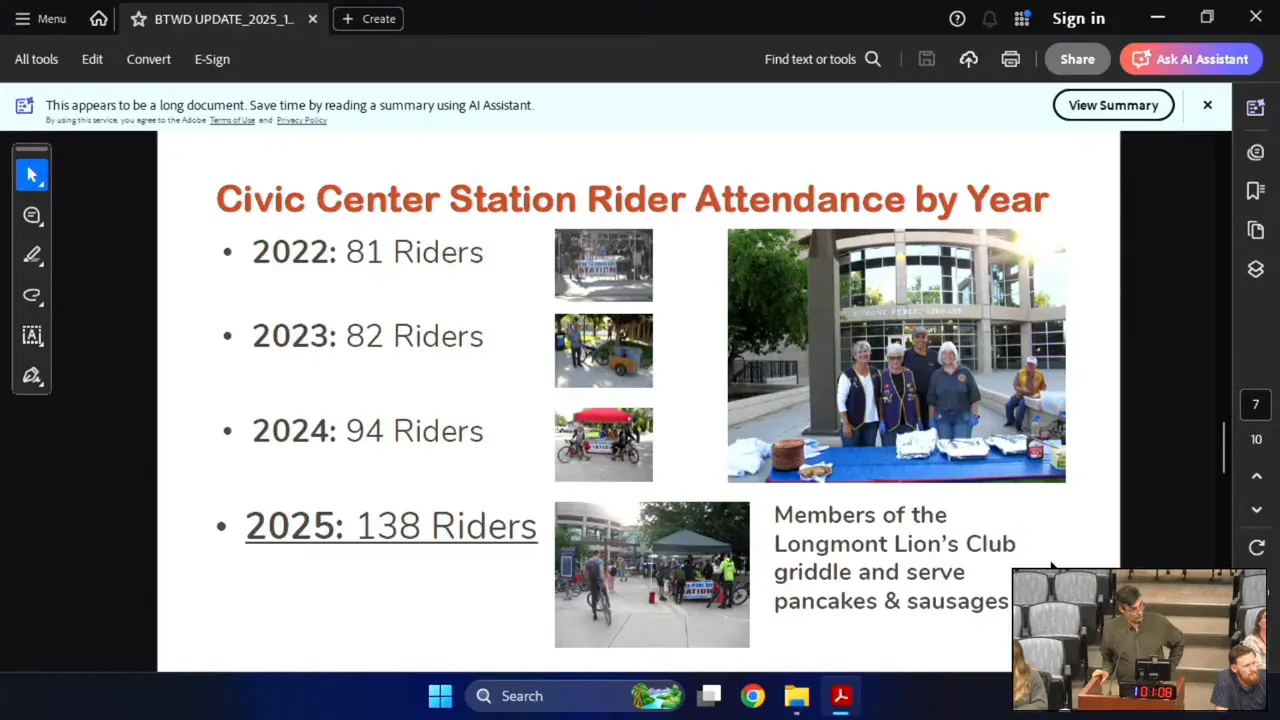
6. Public comments and community concerns
Community voices highlighted specific neighborhood issues and broader transportation concerns.
Historic Eastside neighborhood: truck route impacts
Residents asked for more proactive management of truck routes and requested restoration of a right-turn lane on Kimbark at Third Avenue that was removed during downtown redevelopment. Trucks using navigation apps to route through local streets are creating safety concerns and parking displacement for long-time residents. Staff suggested neighborhood brainstorming and reiterated that enforcement of truck routing is an enforcement and planning issue that requires coordination.
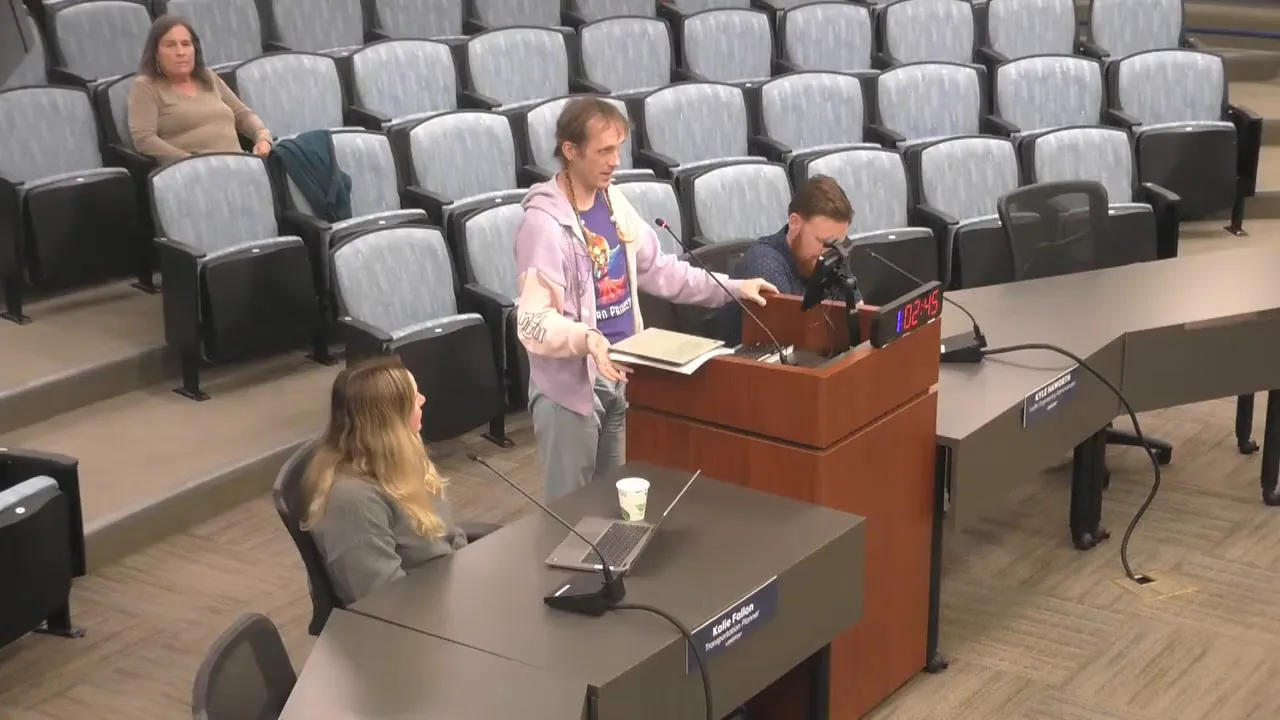
Traffic modeling and second-order effects
A resident asked planners to consider second and third order effects when redesigning traffic patterns — for example, how new three-quarter turns or median changes might push traffic onto collectors or neighborhood routes that are not designed for large volumes. This underlines the importance of system-level thinking when implementing local changes.
Retail perspective on e-bikes
A local e-bike shop owner volunteered as a resource, offering retailer insight into product selection, rider behavior, and education needs. Retailers are often on the front line for consumer questions and can help communicate safety, proper device choice, and correct usage to buyers.
7. Board actions and next steps
Key procedural items concluded the meeting:
- Board motion to approve two candidate recommendations for TAB membership forward to City Council.
- Discussion about holding the December meeting — board decided to continue with the December schedule since there are transitional topics that will benefit from year-end discussion and set-up for January work plan items.
- Staff will return with NTMP documents, bike parking ordinance text, and proposed e-bike educational materials for board feedback in early 2026.
How residents can stay involved and what to expect
Now through early next year, staff plan to develop draft materials and take them through advisory boards and stakeholder groups. Residents can expect:
- Opportunities to review and comment on the updated Neighborhood Traffic Mitigation Program before it becomes policy.
- Educational outreach on e-bike classifications, safe operating practices, and what devices are appropriate on what facilities.
- A proposed bike parking ordinance returned to the advisory board and Planning and Zoning for formal consideration in the first quarter of the year.
- Communications from RTD and the city about the January bus stop realignment and about bike shelter availability at transit hubs.
If you see a contractor placing signs, message boards, or equipment that blocks sidewalks or bike lanes, staff reminded residents to submit a service request. For neighborhood traffic issues, reach out to the NTMP contact once the program is posted. For e-bike questions, local retailers and the city’s education materials will be good first stops until state and federal rules are finalized.
FAQ
What is the Neighborhood Traffic Mitigation Program and how will it change?
The NTMP provides a process for residents to request traffic calming measures. The updated program will shift from strict technical thresholds toward faster, community-driven, and lower-cost solutions such as painted curb extensions, delineators, and daylighting. Draft program documents and an application are expected in early 2026 for board review.
How can residents request traffic calming on their street?
When the updated program is published, residents will submit an application or petition as described in the NTMP document. Staff will prioritize quick, visible interventions and work with neighborhoods to secure buy-in before installing treatments. In the meantime, report safety issues to the city’s service request system so transportation staff can triage urgent problems.
What is the difference between an e-bike and an e-moto?
An e-bike traditionally falls into class 1, 2, or 3 based on pedal-assist and top speed. E-moto is an emerging classification aimed at clarifying vehicles that are essentially mini-motorcycles — faster, heavier, and often lacking bicycle-style safety features. E-moto definitions are being developed at federal and state levels; local rules will align with those definitions when finalized.
Are e-motos allowed on trails or sidewalks?
Currently, policies vary by device classification and jurisdiction. Class 1 and 2 e-bikes can use much of the right-of-way and many trails; class 3 e-bikes are often excluded from certain trails unless a local authority allows them. E-motos are generally not permitted on trails or in public right-of-way until a clear regulatory framework and local ordinances are established.
Who enforces micromobility rules and e-bike restrictions?
Enforcement could involve multiple city departments including police and parks. The work group includes enforcement stakeholders so that recommended rules will be enforceable. Education will precede strict enforcement while definitions and guidance are finalized at higher levels.
How will the new bike parking ordinance affect developments and residents?
New developments will be required to provide bicycle parking based on land use with separate short-term and long-term standards. Long-term parking must be secure and covered, suitable for cargo bikes and e-bikes, and visible for inspection. Residents who want bike shelters on private lots can pursue accessory structure approvals. Installing bike parking in public right-of-way requires city approval and a review process.
What’s the timeline for the bike parking ordinance?
Staff plan to return the full ordinance to advisory bodies and the Planning and Zoning Commission in the first quarter of the next year once graphic and text edits are complete. The board will see a draft and will have opportunities to provide feedback before it moves to council.
How will bus stops change downtown and when?
Starting in January, RTD will realign both local and regional bus services to use Kaufman Street between 9th and 3rd. This change consolidates stops to improve transfers and reduce Main Street bus volumes until the First and Main transit station opens. The city and RTD will share communications to affected businesses and riders in the weeks before the change.
How can the community support a return of transit to DIA?
The city, RTD, and DIA are opening conversations to explore what would be needed. Useful community input includes data on likely riders, park-and-ride usage patterns (license plate surveys have been suggested), employer willingness to contribute to shuttle programs, and interest in a community-run Skyride Longmont shuttle. Once exploratory data and feasibility are clear, agencies will seek broader public feedback.
Who do I contact about unsafe contractor placement that blocks sidewalks or bike lanes?
Submit a service request through the city’s service portal when you notice message boards, temporary equipment, or contractors blocking sidewalks, bike lanes, or pedestrian corridors. The city will work to educate contractors and correct those placements.
Closing thoughts: practical optimism
Longmont is juggling neighborhood-level fixes, systemwide policy, and regional coordination at the same time. That mix is challenging, but the direction is clear: quicker, community-focused neighborhood interventions; thoughtful, coordinated micromobility education and policy; practical bike parking rules that accommodate modern needs; and continued engagement with regional transit partners.
The next months will be a busy period for draft policies, stakeholder outreach, and small, visible improvements on the street. If you are passionate about neighborhood safety, bike infrastructure, or sensible micromobility regulation, now is the time to subscribe to city updates, join advisory forums, and participate when drafts are released for public comment.





